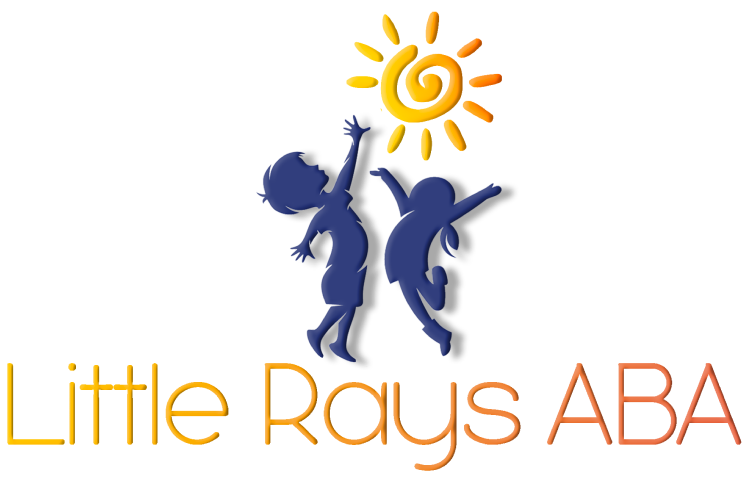Understanding Autism
Definition of Autism
Autism, officially tagged as Autism Spectrum Disorder (ASD), isn't just a big fancy term. It's a pretty big deal affecting how folks connect and communicate with one another or even get around in life. It starts showing up when kids are still little, usually within the first couple of years.
The reason it's called a "spectrum" is because autism isn't a one-size-fits-all kind of thing. Folks with autism have their own mix of strengths and hurdles—no two people are alike. Some may need a lot of help getting through day-to-day stuff, while others might do just fine flying solo.
Core Characteristics of Autism
Here's what you might notice about autism:
- Social Communication Challenges: People with ASD can have a hard time socializing. It might be tricky for them to pick up on gestures, keep a natural flow in chats, or make buddies.
- Restricted and Repetitive Behaviors: It's common for folks to get into repetitive habits, want their routines locked in, or become super interested in specific topics or activities.
- Additional Characteristics: On top of that, individuals may have other traits thrown into the mix. This might mean intellectual challenges, sensory quirks, or unique healthcare needs.
Here's a little cheat sheet breaking down some common traits and behaviors seen in autism:
| Characteristic | Description |
|---|---|
| Social Communication | Hurdles in sharing feelings, reacting socially, and seeing from others’ perspectives |
| Repetitive Behaviors | Doing the same movements or activities, like flipping hands or arranging toys over and over |
| Sensory Sensitivities | Strong or weak reactions to sensory inputs such as noises, lights, or textures |
Getting a handle on these qualities can help parents, family, teachers, and therapists provide top-notch support for those with autism. If you're curious about diving deeper, check out articles like signs of autism in children and social skills and autism.
Symptoms and Challenges
Autism Spectrum Disorder (ASD) jumbles up a variety of symptoms—like a mixed bag of surprises—that touch each person differently. Getting a handle on these quirks is like gold dust for parents, families, teachers, and professionals hanging out with folks on the spectrum.
Social Communication and Interaction
For folks with ASD, social banter can be as puzzling as a cryptic crossword. They might face hurdles like:
- Reading between the lines: Spotting body talk, facial theatrics, or vocal tones can feel like deciphering an ancient script.
- Chitchat hurdles: Kicking off or keeping a chat going may trip them up. They often love yapping about their passions more than anything else.
- Playing emotional ping-pong: Sharing feelings and linking with others can seem like trying to juggle flaming swords for many with autism.
These hurdles make autism a bit different from the run-of-the-mill social struggles. How much they struggle can vary wildly from one person to the next.
Restricted and Repetitive Behaviors
Another telltale sign of autism is that it comes with a side of repeated quirks and habits. This might show up as:
- Echoing: Copying words or moves right after they see or hear them, like a catchy earworm.
- Set-in-stone schedules: Many folks stick to routines like they're glue, and messing with that can cause big-time stress.
- Passionate obsessions: Diving deep into certain topics or activities is a common trait, focusing so hard that everything else fades away.
These actions are seen as core signs of autism in the diagnostic rulebook. They're classified in three stages, from needing just a dab of help to needing serious hand-holding.
Additional Characteristics of Autism
Besides the big two—social struggles and repetitive quirks—some folks might have extra traits that tag along. These can be:
- Super senses: Loud noises, bright lights, certain textures, or intense tastes can either freak them out or become their thing. It’s like having a built-in superhero power but comes with its peculiarities.
- Tummy troubles: Gastro issues aren't strangers to those with ASD, often tossing their comfort out the window and causing behavior hiccups.
- Mind matters: Dealing with anxiety, depression, or other mental health gremlins can sidle up with autism, shuffling the deck on life's quality.
So, the spectrum of what people with autism go through is broad, and personalized tactics are key to giving them the right support. Decoding these traits can shine a light on better chatting, interacting, and overall functioning.
Therapy for Autism
Therapies can really boost life quality for people with autism. Each has its own methods and it's all about finding what clicks with each person. Let's break down three big hitters: Applied Behavior Analysis (ABA), Cognitive Behavioral Therapy (CBT), and Occupational Therapy.
Applied Behavior Analysis (ABA)
ABA is like the MVP for autism treatment. It covers a lot - from helping with talking and making friends to reining in tough behaviors. It uses a mix of numbers and observations to teach good habits and curb the not-so-good ones. It's all about what fits best for each individual.
What Makes ABA Shine:
| Feature | Description |
|---|---|
| Goal-Directed | Targets measurable skills milestones. |
| Data-Driven | Continuous progress checks and adjustments. |
| Individualized | Adapts to each person's unique needs. |
Cognitive Behavioral Therapy (CBT)
CBT is like a toolbox for tackling anxiety, repetitive actions, or down-in-the-dumps feelings in people with autism. It helps them get a handle on emotions, cut down on worry, and find nifty ways to cope with life's curveballs. A bit of structure goes a long way in keeping emotions and actions in check.
Why CBT Rocks:
| Benefit | Description |
|---|---|
| Emotional Regulation | Teaches folks to understand and steer their emotions. |
| Anxiety Reduction | Offers tips and tricks to keep anxiety in check. |
| Coping Strategies | Supplies tools for dealing with life's challenges. |
Occupational Therapy
Occupational Therapy jumps in to help those dealing with sensory puzzles, motor skills hiccups, or daily chores hiccups. The aim? Boost autonomy and life quality with handy support and targeted strategies.
What Occupational Therapy Tackles:
| Focus Area | Description |
|---|---|
| Sensory Processing | Tackles sensory quirks often faced by those with autism. |
| Motor Skills | Works on improving control and coordination. |
| Daily Living Activities | Teaches skills for everyday independence. |
These therapies are like secret allies in helping people with autism. Families can check out these paths to figure out what fits best for their loved ones.
Personalized Treatment Plans
Figuring out what works best for folks with autism is like making their favorite sandwich - it's gotta be just right for them. Everyone knows autism isn’t a one-size-fits-all sorta thing, so making plans that fit just right is key.
Making Therapies Personal
When you’re dealing with autism, it’s all about rolling with what each person needs. That can mean dealing with all sorts of symptoms. Some kids might need extra help talking, getting around, or handling day-to-day stuff, and they’ll need therapies that tackle those specific things.
| What They Need | What Helps |
|---|---|
| Talking Skills | Speech Therapy |
| Getting Around | Physical Therapy, Occupational Therapy |
| Everyday Stuff | Occupational Therapy |
These tailor-made approaches can work wonders, helping kids with ASD make leaps in progress. Specific interventions can make a big difference in their development.
Speech Therapy and Physical Therapy
So, let's talk speech therapy. It's super helpful for kiddos who struggle with talking and interacting. This therapy works on building up language abilities, finding cool new ways to communicate, and making social connections smoother.
| Therapy Type | What It Covers |
|---|---|
| Speech Therapy | Language, Social Interaction |
| Physical Therapy | Motor Skills, Coordination |
And then there's physical therapy, really helping out those kids who have a hard time with movement. It’s all about getting the hang of big movements, keeping balance, and moving smoothly.
Occupational therapy fits right in alongside these therapies. It tackles the daily stuff and helps with sensory processing challenges. Occupational therapists aim to boost independence and make life better all around, focusing on the bits that autism affects.
Putting these therapies together in a strong plan can empower families to nurture the growth and learning of individuals with autism. This holistic approach opens doors for better involvement in social circles and greater self-reliance.
Diagnosis and Early Intervention
Catching Autism Spectrum Disorder (ASD) early is like spotting a shooting star—quick action can make a big difference in a child's world.
Screening for Autism
The American Academy of Pediatrics (AAP) gives a thumbs-up for checking all kids for ASD during their 18- and 24-month checkups. During these visits, healthcare folks look at how a little one is growing and acting to catch any signs of autism.
They aim to spot kids who might need a closer look. Parents, your watchful eyes and concerns, especially about your child’s social and communication chops, are golden here.
Diagnosis Process
Figuring out ASD is a mix of careful watching and testing. Doctors consider what mom and dad say about a child's development, along with their own observations. Here’s what they look for:
| Core Symptoms | Description |
|---|---|
| Deficits in social communication | Trouble talking back-and-forth or reading social hints. |
| Restricted and repetitive behaviors | Doing the same moves, sticking to routines, or being super into specific things. |
ASD comes in flavors, from needing a bit of help to needing a whole lot.
Early diagnosis involves teamwork between parents and pediatricians. Parents bring the scoop on their kiddo’s history and antics, giving docs the info to decide what’s next.
Importance of Early Diagnosis
Spying autism early on opens doors to better support plans. Studies show that with the right help, kids with ASD can shine bright.
With early hits like behavior therapy, children pick up key skills, get better at hanging out with peers, and tackle hurdles easier. When parents and teachers know what to watch for, kiddos can thrive in learning-friendly places.
By getting the lowdown on the screening process, what goes into a diagnosis, and the perks of early action, caregivers can better cheer on and support folks with autism on their unique paths.
Supporting Individuals with Autism
Helping folks on the autism spectrum isn't a one-size-fits-all affair. It takes working with families, tackling medical hurdles, and encouraging them to stand on their own two feet.
Parental Partnerships
Parents are like the superheroes in the story of a child with Autism Spectrum Disorder (ASD). Research shows that kids with ASD can really spread their wings when they’re surrounded by the right kind of support and chances to shine. When parents team up with educators and therapists, a safety net of encouragement forms. This teamwork paves the way for personalized approaches that boost communication and social skills, hitting on those signs of autism in kiddos.
| Good Stuff About Parent Partnerships |
|---|
| More resources and info at your fingertips |
| Better chats between home and therapists |
| Kids do better when the support is steady |
Tackling Medical Problems
There’s more than meets the eye with the medical stuff when it comes to autism. Beyond the usual, things like sensitive senses and tummy troubles can pop up. Nipping these issues in the bud is super important for all-around care. Studies say swift access to doctors and specialists helps a ton in the long run. Parents should be health champions, getting comprehensive check-ups and the right fixes for any extra challenges.
| Usual Medical Headaches in Autism |
|---|
| Sensitive senses |
| Tummy issues |
| Mental wellness matters |
Knowing what could be around the corner helps families whip up care plans that fit their child's needs like a glove.
Achieving Independence
Cheering on those with autism to be independent is a biggie for families. Many kids with ASD make big strides and build meaningful connections with both family and friends. During adulthood, lots find a sweet level of independence, making life a lot brighter. Families can nurture this independence by showing how to handle life’s little chores from an early age, pushing for social mingling, and letting them call the shots during everyday routines.
| Tips for Boosting Independence |
|---|
| Teach life skills early on |
| Encourage mixing and mingling |
| Let them make decisions |
By jumping in and getting hands-on, families can steer those with autism towards a more self-reliant life, all while managing the twists and turns that come with their condition.
SOURCES:
https://www.nimh.nih.gov/health/topics/autism-spectrum-disorders-asd
https://www.cdc.gov/autism/signs-symptoms/index.html
https://www.autismspeaks.org/autism-symptoms
https://www.healthychildren.org/English/health-issues/conditions/Autism/Pages/Diagnosing-Autism.aspx
https://www.autistica.org.uk/what-is-autism/autism-myths-and-causes
Unlock Your Child's Potential with Expert ABA Therapy!
At Little Rays ABA, we provide compassionate, evidence-based ABA therapy to help children with autism thrive. Our personalized approach fosters growth in communication, social skills, and independence.
Get In Touch With Us Today to Get Started With ABA Therapy!
Related Posts
MENU
GET IN TOUCH
7117 San Salvador Dr Boca Raton, FL 33433
3200 Collins Ave Miami Beach, FL 33140



